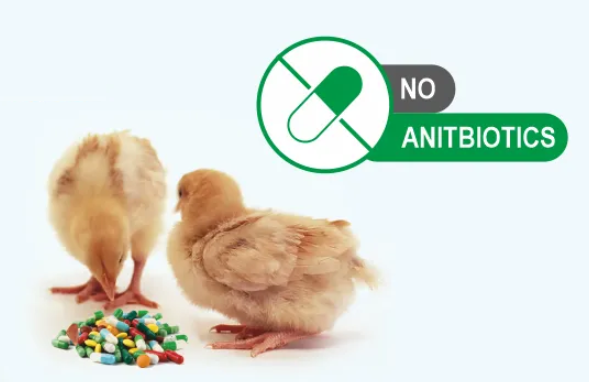A new era has begun in which poultry farmers are moving towards using production systems with limited or no antibiotics, which means for poultry farmers the demand and search for natural and proven safe options for their chickens.
Global consumer demand for antibiotic-free chicken meat has put pressure on food suppliers and they are also challenging manufacturers to provide a product that meets these characteristics. Manufacturers have used edible coccidiostats to control coccidiosis and protozoals And they used antibiotics to destroy bacterial diseases. Chemical treatments are not routinely used in feed in many countries, especially EU countries, and are now only done at the discretion of veterinarians to control a specific disease. As such, manufacturers are looking for natural and proven safe options. .
Broiler chicken vitamin and mineral supplement
The next generation of mannan oligosaccharides
Cerevisiae mannans are natural food options such as oligosaccharides (MOS) obtained from the cell wall of Saccharomyces cerevisiae (as the most important industrial yeast for the production of biochemical products). Mannan oligosaccharides have long been known for their ability to prevent the accumulation of pathogenic agents in the intestine, such as salmonella and Escherichia coli in poultry. The second generation of MRF, which is derived from mannan oligosaccharides, has a higher concentration and can be used with a low concentration in the poultry diet with the same benefits, for example, in the experiments that have been conducted, positive effects on weight gain and feed conversion ratio of chickens that They were given MRF compared to chickens fed the supplement
It was not observed. The amount of watery feces can be used as an indicator of the health of chickens and their disease status, and wet bedding is a major problem in commercial production. Research has shown that feeding chickens with MRF compared to the control group that was not given MRF significantly improved the amount of watery feces, and in chickens fed with bacitracin methylene disalicylate, statistically compared It was not significant with chickens that were given MRF. A meta-analysis has shown that the consumption of MRF was due to a significant increase in the average weight (0.08) (kg) and a decrease in the average feed conversion ratio (0.033) in promotion. Broiler efficiency is effective. The results of the meta-analysis for all trials that include MRF and are comparable show that, statistically, the performance of the broiler groups fed MRF in their diet is similar compared to the groups that were fed with antibiotics, and this indicates the potential of antibiotic replacement. Biotics are natural options.
Multifactorial Intestinal Diseases in Poultry By eliminating preventive antibiotics, the treatment of multifactorial infections such as coccidiosis is a common problem in poultry breeding, and the spread of Campylobacter (Campylobacter) remains a challenge. Birds attack and cause structural damage, inflammation and increased mucus secretion.
Such injuries lead to malabsorption of nutrients, diarrhea and, in serious cases, death. Globally, it is estimated that the financial losses caused by coccidiosis are more than 3 billion dollars annually. Poultry farmers have been encouraged to reduce the negative effects and public health risks of these diseases by using improved management strategies and natural feed options such as MRF along with other gut activators, including plant extracts, research has shown. have shown that the combination of MRF and plant extracts (MRF-PL) reduced oocyte shedding by Eimeria parasite by 14%. It has also improved the feed conversion ratio in broiler chickens from 1.77 to 1.33 even though they were previously vaccinated against coccidiosis.
Among histomoniasis, another protozoan pathogen that mainly affects poultry is histomoniasis, which is usually associated with blackhead disease (BD) in turkeys. The protozoan parasite Histomonas meleagridi, together with Escherichia coli, leads to infectious enterohepatitis, by which the protozoa and bacteria multiply in the intestine enter the blood stream through the cecum, and cause clinical lesions in the liver of poultry. Relevance: The protozoa and bacteria seen in blackhead disease show that adjusting the intestinal microbiota and improving its overall health can
It is beneficial to prevent and reduce clinical symptoms and mortality. Coccidiosis (coccidiosis and blackhead disease) co-infection causes severe economic impact due to clinical disease. Experiments conducted on broiler chickens infected with histomoniasis have shown that MRF and plant extracts from a common drug such as Histostat performed better in both feed conversion ratio and mortality rate, and cecal and liver ulcers in broiler chickens. reduces a lot.
Campylobacteriosis
Campylobacter is one of the main concerns for human health due to the consumption of contaminated carcasses. Poultry may not be affected by this bacteria, but the pathogen is usually present in their intestines, which can be transferred to the meat during processing. Studies have shown that feeding diets containing MRF significantly reduces the amount of Campylobacter accumulation in the cecum of broiler chickens and thus improves weight gain. It is thought that the effect of MRF is non-
directly by changing the bacterial composition and structure of the gut or by increasing the immune system response.
Conclusion To meet the increasing demand for antibiotic-free diets for poultry in order to address the concerns of global consumers regarding antibiotic resistance, the existence of safe and natural alternatives is necessary to contribute to the performance, health and comfort of poultry. . Studies conducted on the use of natural and proven feed ingredients such as MRF and plant extracts have shown that these measures are effective in controlling digestive diseases that affect both chicken and human health.
They risk being effective.
Source :
Jules Taylor Pichard - 2019
Antibiotic free poultry: How to feed them
Translation: Scientific unit of Sama Gostar Kohn Company, a supplier of modern machinery for the poultry and aquatic feed industry




